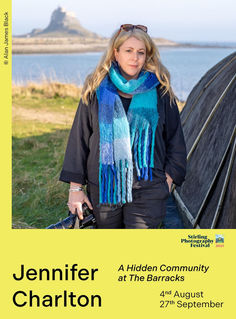The Wild Human Journey - Ignacio "Nacho" Palaez Mella
- Jon Lee
- Jun 16
- 7 min read
Ignacio "Nacho" Palaez Mella graduated with a BA in Professional Photography from Edinburgh College in 2015. Since then, I've followed his phenomenal career and extensive world travels. Nacho's journey into underwater photography, fuelled by his training as a successful free diver, has led him to create, in my opinion, some of the most creative and accomplished work in the field.
His deep passion for the environment and diverse cultures is evident in his images, taking him to locations like the Red Sea (Dahab), the Mediterranean, Mexico, Egypt, the Sea of Cortez, and Riviera Maya.
This is his story…..
During my time at university [Edinburgh College BA Professional Photography], I had a dream: to take my camera into all four elements.
I imagined myself climbing mountains to tell social stories: earth.
I wanted to dive and experience life like an aquatic mammal: water.
I imagined skydiving to photograph the world from a bird’s eye perspective—although drones have made that more accessible today: air.
And the passion for storytelling has always represented fire—the inner flame that gives me the courage to do things I otherwise wouldn’t.
It is challenging to climb that summit for four days. It is hard to wake up at 3 AM to capture the Milky Way. It is uncomfortable to hold the breath for minutes in the pressure of the ocean. Why would I do any of this? For me, the answer is always the same: the camera gives me the strength to do anything.
After finishing university, I asked myself the big questions: What do I want to communicate through imagery? What is my photographic style? What message do I want to share? One thing I knew for certain was based on the words of my father, that every decision in life must be guided by three standards- Personal benefit, social benefit, and nature benefit.
For my final university project, I had the incredible opportunity to travel to Egypt and Morocco. Looking back, I see how much I still had to grow—not just as a photographer, but in understanding who I was becoming as a person. That journey, in its rawness and naiveté, would quietly shape everything that followed. I set out to explore the contrasts between these two Arab cultures—so similar in language and faith, yet profoundly distinct in expression.
Through a series of editorial portraits, I sought to tell stories that would transport the viewer far from European life: the echoing calls to prayer, the lingering unrest after the Arab Spring of 2014, and the silent tension between ancient history and the fractured present. Even then, I began noticing how much of a country’s identity was being curated into illusion. In Egypt especially, I saw how the image of the pharaohs had been turned into a spectacle—repackaged to attract tourism and monetize a legacy long detached from its living roots. Walter Benjamin once reflected on how aesthetic beauty can seduce the senses and provoke emotion, even as it conceals deeper social truths. That façade—beautiful yet hollow—often hides realities marked by economic decline and cultural erosion.




During that time, I began work on 'Mature Innocence', a photojournalist project born from my growing awareness of social complexity. It explored the long and painful aftermath of Spain’s withdrawal from Western Sahara and the Moroccan occupation that followed. It was the first time I tried to use the camera not just to witness, but to understand—to document injustice and resilience in the same frame.





Later, while living in Nepal and continuing my search for meaning through imagery, I created Shivaratri. This project documented the final days of Shivagiri Bike Baba, a spiritual figure who had devoted his life to service at the Annapurna Ashram in Pashupatinath. I remember sitting with him in silence during Maha Shivaratri, the great night of Shiva, held at the sacred temple complex of Pashupatinath in Nepal.
The air was thick with incense, chants echoed in the distance, and the scent of burning wood and ashes drifted from the nearby ghats, where the bodies of the recently departed were being cremated. It was a moment suspended between the material and the spiritual. I knew then that what I was photographing was not just the end of a life, but the embodiment of a rare kind of grace—a serene acceptance of impermanence, devotion, and the mystery of what lies beyond.


These stories were meaningful. They brought me into direct contact with the weight and beauty of human resilience. And yet, somewhere deep within, I began to long for something beyond struggle—something less defined by trauma, and more by wonder. A quieter truth.
It was around this time that the life of Sebastião Salgado began to resonate more deeply with me. I had known of his work for years, but it was his later journey—his return to nature, and the shift in Genesis—that inspired me to consider my own path in a different light.
Salgado had spent decades documenting human suffering but eventually turned his lens toward the untouched corners of the planet. Not in retreat, but in renewal. That turning point stayed with me. I realized I didn’t want to only document the consequences of our brokenness. I wanted to be part of imagining another way of living—of engaging with the world. I started to dream of a different kind of storytelling, one that could open space for connection, reverence, and responsibility. I imagined a form of travel and photography rooted not in consumption, but in communion. One that honoured local traditions instead of erasing them. One that supported economies without exploiting ecosystems. I wanted to show the world not as a product, but as a shared inheritance.
That shift in vision brought me back to Egypt—but this time with a new purpose: to learn to dive, to freedive, and to take my camera beneath the surface. I knew that if I was to tell the story of the ocean, I would need to feel it from within.



What followed were eight years of quiet apprenticeship to water. To photograph underwater, you must first surrender to it. Depth and time become less about numbers 50 meters deep, five minutes of breath hold—and more about thresholds into another state of being.
Sometimes, I found myself photographing at 30 meters, where the light begins to vanish, one colour at a time. Red disappears first, then yellow, then green—until you're immersed in blue. That light, filtered and diffused, reminded me of the blue hour after sunset—a soft, almost otherworldly glow. It felt like standing between two worlds. In many ways, those hues foreshadowed my later fascination with astrophotography. The same sense of silence, of vastness, of the unknown—only inverted. Where the ocean pulls you inward, the cosmos draws you outward. But both invite stillness and wonder. Both require you to listen.



Underwater, time slows. Movements become fluid and quiet. The water’s surface is never still; it bends light, distorts lines, reframes what you see. Composing a photograph in that space isn’t just technical—it’s intuitive. You learn to wait. To let the image come to you. The ocean does not offer itself easily. But if you learn its language, it becomes a collaborator. A mirror. A teacher. Beneath all of that, a deeper awareness was growing that we, as living beings, are capable of immense adaptation.
That magic—true magic—emerges not when we conquer nature, but when we remember that we belong to it. This, I believe, is worth naming—because it has been one of the great teachings of my life. We are creatures built to adapt, when we step into an environment as foreign as the deep, we begin to rediscover a forgotten truth: that magic is real, and it lives at the edge of our comfort zone, waiting to be seen with awakened eyes.
The natural world does not need us to conquer it. It invites us to remember it.
Through my camera, I try to honour that invitation. To inspire a sense of wonder and reverence. To protect what still breathes freely—so that in doing so, we might reconnect with the parts of ourselves that have always belonged to the Earth, to the sea, to the wild.
These eight years eventually led me to Baja California, where I now live with my wife Jen, and where our son Leo will soon be born. The songs of whales and the legendary figure, Jacques Cousteau, first drew me here. Now, I have lived four years of diving with marine life on this side of the planet. Seeing the breath of these giants from the surface and feeling the mist from their blowholes brush my face—that closeness is what makes you truly grasp their magnificence.
These creatures, once on the edge of extinction, are slowly making their way back. Each encounter feels like a rare privilege—an invitation into a world that has learned to endure. Playing with sea lions, being surrounded by hundreds of dolphins, watching orcas hunt, or seeing flocks of birds dive into the sea like living missiles—these were among the most life-affirming experiences I’ve ever had. The ocean became not just a place of exploration, but a space of deep connection.




In the midst of this, I was laying the foundations for a project I called Seanergy—a company born from a desire to share this magic responsibly. The vision was clear: to bring people closer to the ocean, to help them move with grace in the water, to foster respectful encounters with marine life, and to teach the art of photographing these moments with care and reverence.
Seanergy was meant to be a bridge—between humans and the sea, between awe and awareness. However, just as the project began to take shape and I began guiding the first groups into these pristine waters, the place exploded in popularity. What had once felt sacred was suddenly saturated. Thousands arrived—many not with curiosity, but with conquest in mind, chasing images rather than experiences. The same places I once introduced as sanctuaries were becoming spectacles. The overuse of these natural spaces became so intense that I could no longer, in good conscience, continue bringing people there. What was meant to be a space of communion had turned into a backdrop for performance. Places that once overflowed with life now feel empty overexploited by the compulsion to say: “I was there.” That made me rethink my path. Over the last two years, I’ve focused all my experience on what I believe is our next frontier: space.
Today, my company, Wild Human Photo, explores Baja California and beyond, developing astrophotography routes and protecting dark skies. Last year, together with the Ministry of Tourism—alongside my wife and the Wild Human team—we created Mexico’s first visual guide to astrotourism. We continue to work with the ministry and Dark Sky International to build a new, responsible tourism industry—one where conservation and culture grow together, supporting local economies and traditional ways of life. In a way, I feel I’ve come full circle—connecting my roots and my desire: To contribute socially, protect nature, and express through photography the message I carry inside.




Making a living doing what I love is the greatest gift: it allows me to grow, to support my family, and to build something that holds value beyond myself. I hope that something in my story inspires you, helps you, or encourages you to create your own.

























Comments